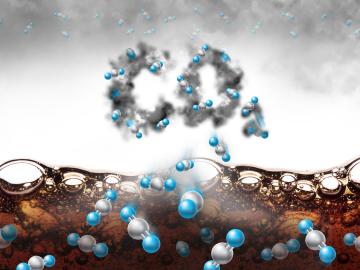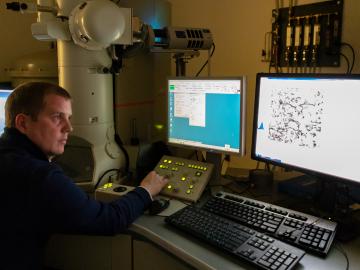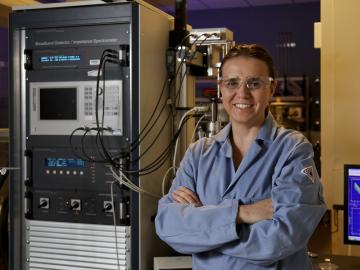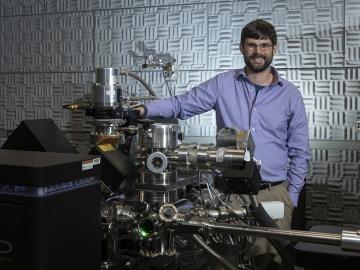
Filter News
Area of Research
- (-) Materials (47)
- (-) Supercomputing (11)
- Advanced Manufacturing (14)
- Biological Systems (1)
- Biology and Environment (31)
- Building Technologies (1)
- Computer Science (3)
- Electricity and Smart Grid (2)
- Energy Science (77)
- Functional Materials for Energy (1)
- Fusion and Fission (3)
- Fusion Energy (2)
- Isotopes (1)
- Materials Characterization (1)
- Materials for Computing (10)
- Materials Under Extremes (1)
- National Security (6)
- Neutron Science (9)
- Quantum information Science (1)
- Sensors and Controls (1)
- Transportation Systems (1)
News Type
News Topics
- (-) 3-D Printing/Advanced Manufacturing (13)
- (-) Bioenergy (6)
- (-) Exascale Computing (5)
- (-) Grid (1)
- (-) Materials Science (38)
- Advanced Reactors (4)
- Artificial Intelligence (6)
- Big Data (6)
- Biology (4)
- Biomedical (7)
- Buildings (2)
- Chemical Sciences (12)
- Clean Water (1)
- Composites (5)
- Computer Science (26)
- Coronavirus (4)
- Critical Materials (8)
- Cybersecurity (2)
- Energy Storage (18)
- Environment (13)
- Frontier (6)
- Fusion (6)
- High-Performance Computing (14)
- Irradiation (1)
- Isotopes (4)
- ITER (1)
- Machine Learning (3)
- Materials (42)
- Microscopy (17)
- Molten Salt (2)
- Nanotechnology (22)
- National Security (1)
- Neutron Science (10)
- Nuclear Energy (9)
- Partnerships (2)
- Physics (12)
- Polymers (11)
- Quantum Computing (6)
- Quantum Science (7)
- Security (1)
- Simulation (5)
- Software (1)
- Space Exploration (3)
- Summit (7)
- Transportation (10)
Media Contacts

Using additive manufacturing, scientists experimenting with tungsten at Oak Ridge National Laboratory hope to unlock new potential of the high-performance heat-transferring material used to protect components from the plasma inside a fusion reactor. Fusion requires hydrogen isotopes to reach millions of degrees.

A new method developed at Oak Ridge National Laboratory improves the energy efficiency of a desalination process known as solar-thermal evaporation.

Oak Ridge National Laboratory has teamed with Cornell College and the University of Tennessee to study ways to repurpose waste soft drinks for carbon capture that could help cut carbon dioxide emissions.

A team of researchers at Oak Ridge National Laboratory have demonstrated that designed synthetic polymers can serve as a high-performance binding material for next-generation lithium-ion batteries.

Scientists have discovered a way to alter heat transport in thermoelectric materials, a finding that may ultimately improve energy efficiency as the materials

Kevin Field at the Department of Energy’s Oak Ridge National Laboratory synthesizes and scrutinizes materials for nuclear power systems that must perform safely and efficiently over decades of irradiation.

Vera Bocharova at the Department of Energy’s Oak Ridge National Laboratory investigates the structure and dynamics of soft materials.

Scientists have tested a novel heat-shielding graphite foam, originally created at Oak Ridge National Laboratory, at Germany’s Wendelstein 7-X stellarator with promising results for use in plasma-facing components of fusion reactors.

Jon Poplawsky, a materials scientist at the Department of Energy’s Oak Ridge National Laboratory, develops and links advanced characterization techniques that improve our ability to see and understand atomic-scale features of diverse materials

Sergei Kalinin of the Department of Energy’s Oak Ridge National Laboratory knows that seeing something is not the same as understanding it. As director of ORNL’s Institute for Functional Imaging of Materials, he convenes experts in microscopy and computing to gain scientific insigh...


